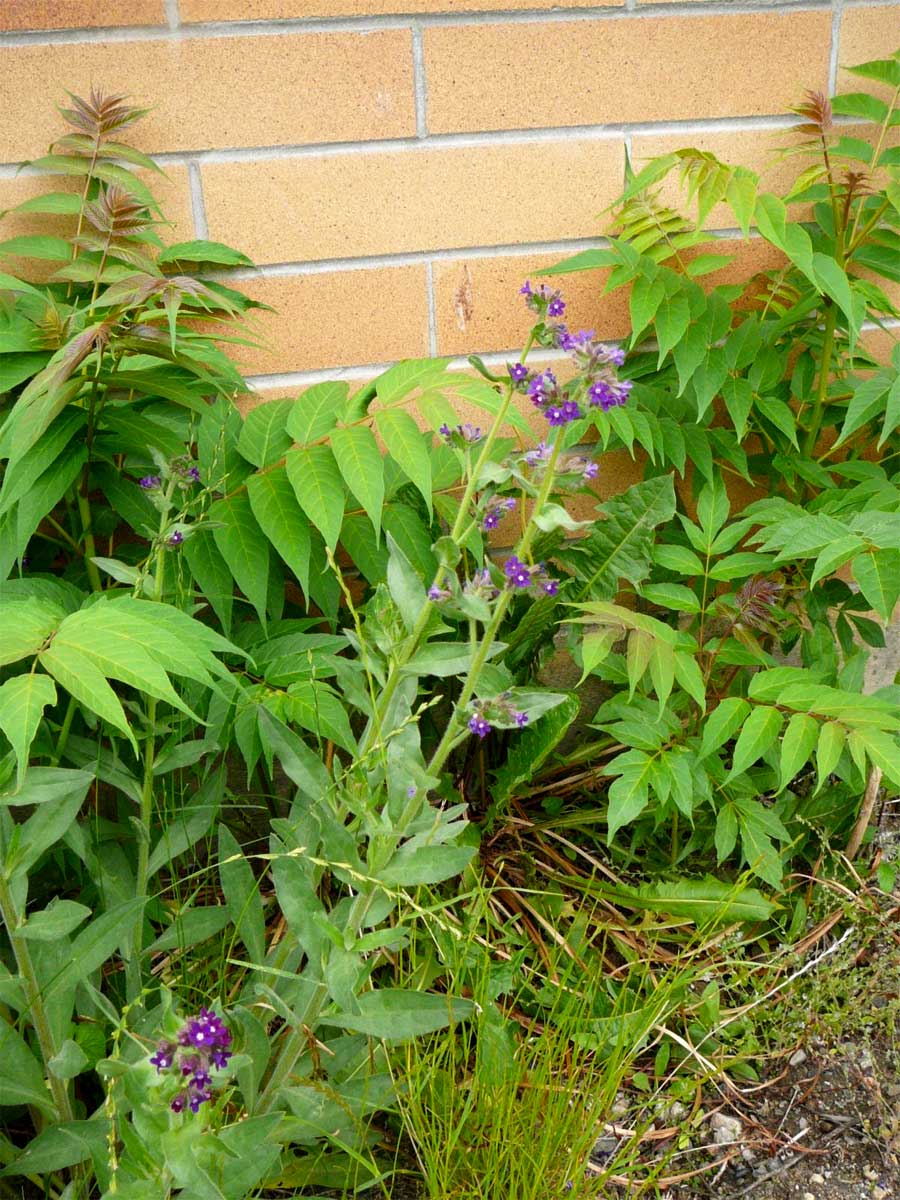Article and Photo by Gwen Steele–
One of the biggest causes of escalating landscape maintenance tasks is the failure to remove weeds before they set seed or establish extensive root systems.
I discovered an infestation of Blueweed on the edge of a downtown gravelled parking lot. Like many noxious weeds, they thrive in dry conditions and populate disturbed soil.
Blueweed (Echium vulgare) is about two feet high and of variable width. Masses of small brilliant blue flowers are followed by up to 2,000 burr-like seeds. They spread easily by sticking to clothes and animal fur. It has the same invasive potential as knapweed so we all need to act now to eradicate it in our area.
The plant looks nice, so is not recognized as a weed until it comes up everywhere the next year.
In the past, two species of large shade trees have been used extensively for their fast growth that are now considered invasive in many parts of North America. They are the Siberian Elms and the Tree of Heaven.
Late in May, Siberian Elms (Ulmus pumila) ‘snow’ their millions of white dime-sized discs of seeds all over the valley. The trees can be seen in the small park to the west of the road into Knox Mountain Park.
This month, Tree of Heaven (Ailanthus altissima) will be topped with a froth of orange/yellow flowers. From late summer to next spring they each shed millions of seeds. The trees look a bit like Sumac or Walnut but are easily identified by rubbing leaves or bark – both stink, hence the common name, Stink Tree.

Blueweed (Echium vulgare) and Tree of Heaven (Ailanthus altissima)

